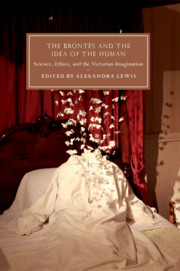Book contents
- The Brontës and the Idea of the Human
- Cambridge Studies in Nineteenth-Century Literature and Culture
- The Brontës and the Idea of the Human
- Copyright page
- Contents
- Figures
- Contributors
- Abbreviations
- Introduction Human Subjects
- Chapter 1 Hanging, Crushing, and Shooting
- Chapter 2 Learning to Imagine
- Chapter 3 Charlotte Brontë and the Science of the Imagination
- Chapter 4 Being Human
- Chapter 5 Charlotte Brontë and the Listening Reader
- Chapter 6 Burning Art and Political Resistance
- Chapter 7 Degraded Nature
- Chapter 8 ‘Angels … Recognize Our Innocence’
- Chapter 9 ‘A Strange Change Approaching’
- Chapter 10 ‘Surely Some Oracle Has Been with Me’
- Chapter 11 Jane Eyre, A Teaching Experiment
- Chapter 12 Fiction as Critique
- Chapter 13 We Are Three Sisters
- Bibliography
- Index
- Cambridge Studies in Nineteenth-Century Literature and Culture
Chapter 2 - Learning to Imagine
The Brontës and Nineteenth-Century Educational Ideals
Published online by Cambridge University Press: 22 May 2019
- The Brontës and the Idea of the Human
- Cambridge Studies in Nineteenth-Century Literature and Culture
- The Brontës and the Idea of the Human
- Copyright page
- Contents
- Figures
- Contributors
- Abbreviations
- Introduction Human Subjects
- Chapter 1 Hanging, Crushing, and Shooting
- Chapter 2 Learning to Imagine
- Chapter 3 Charlotte Brontë and the Science of the Imagination
- Chapter 4 Being Human
- Chapter 5 Charlotte Brontë and the Listening Reader
- Chapter 6 Burning Art and Political Resistance
- Chapter 7 Degraded Nature
- Chapter 8 ‘Angels … Recognize Our Innocence’
- Chapter 9 ‘A Strange Change Approaching’
- Chapter 10 ‘Surely Some Oracle Has Been with Me’
- Chapter 11 Jane Eyre, A Teaching Experiment
- Chapter 12 Fiction as Critique
- Chapter 13 We Are Three Sisters
- Bibliography
- Index
- Cambridge Studies in Nineteenth-Century Literature and Culture
Summary
Dinah Birch considers how debates surrounding the education of women in the first half of the nineteenth century highlight growing conflict between models of education as a process of social control and as a pathway to self-determination. Contradictory experiences of the schooling of creativity (into adherence to public values or intense individualism), shared by many women of the Brontës’ generation and class, are fundamental to the Brontës’ divergent fictional realisations of the concept of human imagination. Birch considers the influence of educational reformers such as Sir James Kay-Shuttleworth and the early feminist writer Mary Wollstonecraft. As Birch notes, the Brontë juvenilia shows how the boundary between education and creativity was always porous in the Brontë family: the narratives of the elaborate fictional worlds of Gondal and Angria reflected the children’s reading in literature, current affairs, politics and history. Tracing the experiences of the Brontës as pupils and teachers, Birch demonstrates their range of novelistic approaches to didacticism and creativity, and to the importance of home (rather than schoolroom) education of children into the values of honesty, sympathy and charity, with particular reference to Charlotte’s Jane Eyre, Emily’s Wuthering Heights, and Anne’s Agnes Grey and The Tenant of Wildfell Hall.
- Type
- Chapter
- Information
- The Brontës and the Idea of the HumanScience, Ethics, and the Victorian Imagination, pp. 48 - 66Publisher: Cambridge University PressPrint publication year: 2019



